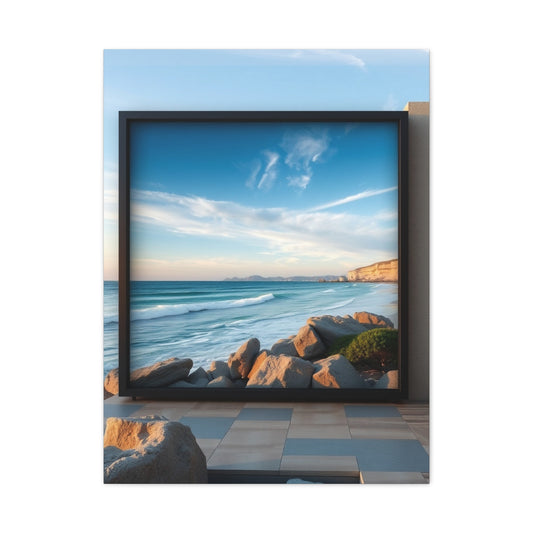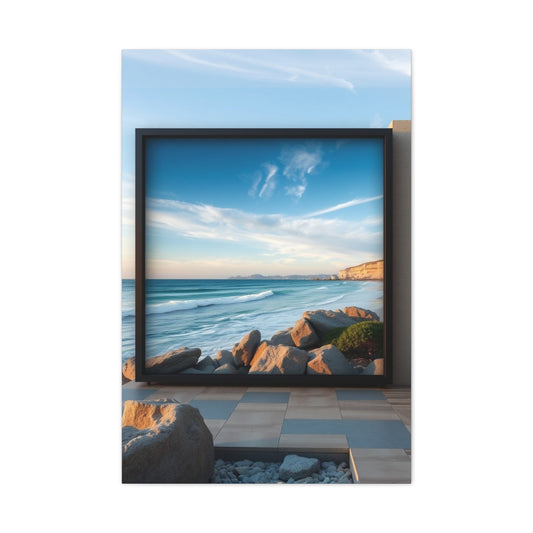Multi-story residential dwellings represent extraordinary opportunities for innovative interior design that transcends conventional single-level constraints while maintaining budget-conscious approaches to aesthetic excellence. These distinctive architectural configurations provide homeowners with expansive canvases for creative expression, allowing for sophisticated design implementations that deliver remarkable visual impact without requiring excessive financial investment.
The inherent versatility of multi-level residential structures enables design professionals and homeowners to explore dynamic spatial relationships, innovative material applications, and creative architectural solutions that transform ordinary living spaces into extraordinary environments. These dwellings offer unique advantages through their vertical dimension, providing opportunities to create distinct zones for various activities while maintaining cohesive design narratives throughout the entire residence.
Contemporary multi-level home design philosophy embraces the principle that exceptional interior aesthetics need not correlate directly with substantial financial expenditure. Through strategic material selection, creative space utilization, and thoughtful design planning, homeowners can achieve sophisticated, professionally designed interiors that rival expensive custom installations while maintaining reasonable budget parameters.
The architectural complexity of multi-level homes demands comprehensive understanding of spatial flow, visual continuity, and functional integration to achieve successful design outcomes. These residential configurations present both opportunities and challenges that require careful consideration of lighting, circulation patterns, and material transitions to create harmonious living environments that feel purposeful rather than fragmented.
Understanding the fundamental principles of multi-level interior design enables homeowners to make informed decisions about space allocation, color schemes, furniture selection, and architectural modifications that maximize both aesthetic appeal and functional efficiency. This comprehensive approach ensures that every design decision contributes to the overall success of the residential environment while respecting budgetary constraints.
Architectural Foundation and Spatial Planning Principles for Multi-Level Homes
Understanding the Architectural Backbone of Multi-Level Residential Structures
Multi-level residential homes offer a profoundly layered canvas for innovative spatial design. These vertically organized structures go beyond the limitations of single-story homes, creating a realm of possibilities for architectural storytelling, spatial drama, and dimensional interaction. Unlike their flat counterparts, multi-level homes utilize the vertical axis to establish architectural rhythms and cadences that redefine how we perceive space, movement, and livability.
At their core, these structures rely on a robust architectural foundation comprising load-bearing walls, central support systems, and intricately configured stairwells. These elements, often considered utilitarian, can be transformed into visual anchors that elevate the aesthetic narrative of a space. For example, exposed beams, vertical voids, and suspended staircases create rhythmic focal points that reinforce spatial continuity between levels. These inherent architectural nuances set the stage for layered living experiences that engage the eye and invite movement.
Designing around structural integrity doesn’t mean surrendering creativity; instead, it demands strategic synergy between engineering precision and design intention. Interior elements such as double-height ceilings, mezzanine viewpoints, and floor cutouts present design features that accentuate the structural uniqueness of the home. These details, when thoughtfully woven into the spatial plan, ensure that the architecture itself contributes to the emotional and functional quality of the home environment.
Strategic Spatial Zoning for Functional Harmony
Effective spatial zoning in multi-level homes requires meticulous planning to maintain harmony across vertical layers. Each level should serve a distinct purpose while maintaining a fluid relationship with the levels above and below. A typical strategy may involve allocating public spaces like living rooms and kitchens to the lower levels, while dedicating upper floors to private areas such as bedrooms, study zones, or wellness retreats. This approach fosters a clear hierarchy and supports both privacy and social engagement.
Vertical separation of spaces also allows for acoustic management. For instance, placing children's rooms or hobby areas on different floors from workspaces or master bedrooms minimizes auditory interference and enhances peace across the home. Spatial zoning should also consider lifestyle rhythm—such as morning versus evening activity zones—to create intuitive flow throughout the day.
Thoughtful vertical spatial segmentation enhances circulation efficiency while reducing overexposure to foot traffic in quieter zones. This orchestrated separation avoids jarring transitions between functions and supports long-term comfort. Multi-level spatial organization allows you to reimagine traditional room adjacencies, blending open-plan concepts with well-defined private sanctuaries through elevation changes rather than walls.
Optimizing Vertical Circulation for Fluid Movement
One of the defining challenges in multi-level residential planning lies in achieving seamless and comfortable vertical circulation. Stairs, landings, and connecting corridors must do more than just connect floors—they should integrate organically into the home's overall design identity and promote fluidity. Poorly planned circulation can quickly become a disruption to lifestyle convenience, creating bottlenecks or dead spaces that feel disjointed.
Staircases are especially critical in this equation. They function as sculptural elements, visual thresholds, and mobility conduits all at once. Whether you opt for floating stairs, switchback formats, or centralized spiral designs, each configuration affects the home's visual perception and navigational clarity. Wide landings between flights can serve as transitional moments where light fixtures, artwork, or material changes add depth and tactile richness.
Where appropriate, installing staircases near sources of natural light—such as skylights or clerestory windows—adds levity and softens the structural density of vertical movement. For aging residents or multi-generational households, integrating elevators or chair lifts becomes a valuable accessibility enhancement that doesn’t compromise aesthetics when tastefully concealed within cabinetry or partitioned enclosures.
Circulation should consider not just physical mobility, but emotional wayfinding. Navigating the home should evoke a sense of ease and connection rather than visual fragmentation. Aligning staircase lines with major sightlines or framing them with glass railings can expand perceived space and foster transparency between levels.
Harnessing Natural Light Across Vertical Dimensions
Illuminating multi-level homes requires a nuanced approach that transcends traditional lighting tactics. Because light behaves differently across varying elevations, a well-thought-out lighting strategy is pivotal to maintaining consistency and enhancing mood. Natural light should be choreographed to cascade vertically through the architecture, creating bright focal points, softened shadows, and dramatic silhouettes that shift with the time of day.
Architectural elements such as atriums, skylights, and vertical glazing play a major role in ensuring daylight reaches interior zones that would otherwise remain dim. A central light shaft, for instance, can funnel daylight from rooftop skylights down to lower floors, reducing the need for artificial lighting and bringing visual unity across all levels.
On upper levels, large windows or clerestory installations offer a panoramic flood of light and provide views that elevate the emotional value of interior spaces. Meanwhile, mirrored surfaces and reflective finishes amplify light dispersion and give a sense of expanded volume in narrow stairwells or corridors.
Artificial lighting should supplement natural sources with a layer-based approach—ambient lighting for general illumination, task lighting for function zones, and accent lighting to highlight architectural or decorative features. Integrated LED strips along stairs, floating platforms, or recessed coves can provide safe passage and ambient warmth during evening hours. Strategic lighting placements not only maintain safety and functionality but help establish visual continuity and emotional resonance between levels.
Designing Cohesive Material Transitions Across Floors
Multi-level interiors must balance visual interest with unity, especially when transitioning materials and finishes across floors. A successful palette establishes a rhythmic consistency while offering room for variation to reflect different room functions or moods. Material shifts should occur with intention, marking transitions in spatial purpose or experiential tone.
For instance, you might choose hardwood flooring for shared spaces like living and dining areas on the ground floor, transitioning to plush carpeting or textured vinyl in upper-level bedrooms for acoustic absorption and tactile comfort. Material junctions between stairs and landings must be executed with precision to prevent jarring shifts that disrupt the home’s aesthetic fluidity.
Wall finishes and color palettes should similarly reflect both differentiation and cohesion. Vertical color gradients, tone-on-tone transitions, or repeated accent materials help string visual cues together without monotonous repetition. A darker floor base with ascending lighter hues draws the eye upward, giving a sense of airiness and height—a useful technique in stairwell design.
Natural materials like timber, stone, and clay tiles offer tactile and visual warmth, complementing vertical transitions with earthy grounding. Textured finishes such as exposed concrete or patterned wallpapers introduce depth and visual intrigue without compromising flow. Ultimately, consistent design vocabulary—be it through recurring shapes, motifs, or color themes—binds multi-level spaces into a unified living experience.
Incorporating Psychological Spatial Flow
Beyond form and function, spatial planning in multi-level homes should respond to the human psyche. How a person feels when entering a room, descending a staircase, or looking across a void can influence their experience of the home as a whole. Creating a sense of openness, control, and invitation across levels is crucial to fostering emotional well-being in the home.
Transitional zones—like stairwells, vestibules, or balconies—should be treated as opportunities for decompression. These spaces benefit from design gestures that cue relaxation, such as warm lighting, curved lines, or natural materials. Designing with sensory transitions in mind promotes mental wellness, especially in homes where different floors serve drastically different functions (e.g., a bustling kitchen below a meditation loft).
Spatial compression and expansion should be alternated thoughtfully—narrow corridors leading to voluminous atriums or lofted ceilings above intimate sitting areas enhance the drama of progression. Vistas and sightlines also contribute to spatial psychology. Aligning vertical sightlines with focal points such as artwork, natural vistas, or lighting installations enriches the experiential depth of the interior.
Zones dedicated to silence—like reading nooks or master retreats—should be acoustically isolated through structural layering, soundproofing materials, or strategic placement. This sensory zoning supports holistic design by aligning spatial programming with the psychological needs of rest, focus, and intimacy.
Revolutionary Staircase Design Solutions for Vertical Circulation
Staircase design in multi-level homes extends far beyond basic functional requirements to encompass architectural statements that significantly impact the overall character and visual appeal of residential interiors. These vertical circulation elements represent opportunities to introduce dramatic design features while maintaining practical functionality and budget consciousness.
Contemporary staircase design philosophy emphasizes clean lines, innovative materials, and space-efficient configurations that complement rather than dominate surrounding architectural elements. Modern approaches favor minimalist aesthetics that create visual lightness while providing sturdy, safe circulation between levels without overwhelming compact spaces.
Material selection for staircase construction significantly impacts both aesthetic appeal and project costs, with options ranging from economical wood and steel combinations to more elaborate natural stone or engineered materials. Understanding the performance characteristics and visual properties of different materials enables homeowners to make informed decisions that balance aesthetic goals with budget constraints.
Structural considerations in staircase design include load-bearing requirements, building code compliance, and integration with existing architectural elements that influence both design possibilities and installation costs. Professional consultation during the planning phase helps identify feasible design approaches while avoiding costly modifications or code compliance issues.
Innovative railing systems offer opportunities to introduce contemporary design elements while maintaining safety requirements and budget consciousness. Glass panels, cable systems, and minimalist metal frameworks provide modern alternatives to traditional balusters while creating visual transparency that enhances spatial flow between levels.
Storage integration within staircase design maximizes space utilization in multi-level homes, incorporating concealed compartments, built-in shelving, or under-stair storage solutions that provide practical benefits while maintaining clean aesthetic lines. These multifunctional approaches demonstrate how thoughtful design can address multiple needs simultaneously.
Lighting integration within staircase design enhances both safety and visual appeal through strategic placement of illumination elements that highlight architectural features while providing adequate visibility for safe navigation. LED strip lighting, recessed fixtures, and accent lighting create dramatic effects while maintaining energy efficiency.
Comprehensive Interior Design Strategies for Multi-Level Environments
Interior design success in multi-level homes requires sophisticated understanding of how color, texture, pattern, and scale interact across vertical spaces to create cohesive, visually appealing environments. The expanded canvas provided by multi-level configurations demands careful orchestration of design elements to avoid visual chaos while maximizing aesthetic impact.
Color coordination across multiple levels involves strategic selection of palettes that create visual flow while allowing for individual room personalities and functional differentiation. Successful color schemes establish unifying themes while providing flexibility for personalization and adaptation to different activities and preferences.
The psychological impact of color in multi-level environments becomes amplified through the increased visual exposure created by open sight lines between levels. Understanding color psychology enables designers to create environments that support desired moods and activities while maintaining visual harmony throughout the residence.
Texture and material coordination across levels creates tactile interest and visual depth while establishing cohesive design narratives that connect different areas of the home. Strategic repetition of materials, finishes, and textures creates rhythm and flow while avoiding monotony through thoughtful variation and contrast.
Scale relationships become particularly important in multi-level homes where furniture and architectural elements must work harmoniously across different ceiling heights, room proportions, and viewing angles. Understanding appropriate scale relationships prevents individual elements from appearing oversized or undersized within the overall composition.
Lighting design in multi-level homes requires layered approaches that address different functional needs while creating dramatic architectural effects. Ambient, task, and accent lighting must be coordinated across levels to ensure adequate illumination while supporting the overall aesthetic vision of the space.
Pattern integration through textiles, wall treatments, and decorative elements adds visual interest and personality while maintaining design cohesion across multiple levels. Strategic pattern placement creates focal points and visual movement while avoiding overwhelming effects that can fragment the overall design composition.
Space Optimization Techniques for Compact Multi-Level Homes
Compact multi-level residential configurations demand innovative space utilization strategies that maximize functionality while maintaining aesthetic appeal and comfortable circulation. These smaller-scale implementations require creative solutions that address storage needs, furniture placement, and activity zones within constrained square footage.
Vertical storage solutions capitalize on the height available in multi-level homes, utilizing wall-mounted systems, ceiling-hung storage, and multi-functional furniture pieces that serve dual purposes while minimizing floor area requirements. These approaches maximize storage capacity while maintaining clean, uncluttered aesthetic appearance.
Multi-functional furniture selection becomes crucial in compact multi-level homes where individual pieces must serve multiple purposes to justify their spatial footprint. Ottoman storage, expandable dining tables, and convertible seating arrangements provide flexibility while maintaining design integrity and visual appeal.
Open floor plan integration between levels creates visual expansion and improved circulation while maintaining distinct functional zones for different activities. Strategic use of partial walls, furniture arrangements, and level changes defines spaces without creating physical barriers that compromise the sense of openness.
Natural light maximization through strategic window placement, reflective surfaces, and light-colored finishes creates the illusion of expanded space while reducing dependence on artificial illumination. Mirror placement, glossy finishes, and light-colored paint selections amplify available light while creating visual depth.
Built-in solutions maximize space efficiency through custom-designed elements that perfectly fit available spaces while serving multiple functions. Built-in seating, integrated storage systems, and custom millwork create seamless appearances while addressing specific functional requirements efficiently.
Flexible room configurations allow compact multi-level homes to adapt to changing needs and activities through moveable partitions, transformable furniture, and multi-purpose spaces that can serve different functions at different times. This adaptability maximizes the utility of limited square footage.
Sustainable and Eco-Friendly Multi-Level Interior Solutions
Environmental consciousness in multi-level home design encompasses material selection, energy efficiency, and sustainable practices that reduce environmental impact while creating healthy, comfortable living environments. These approaches demonstrate that responsible design choices can enhance rather than compromise aesthetic appeal and functional performance.
Sustainable material selection prioritizes renewable resources, recycled content, and low-impact manufacturing processes while maintaining durability and aesthetic appeal. Bamboo flooring, reclaimed wood elements, and recycled metal fixtures provide environmentally responsible alternatives to conventional materials.
Energy-efficient lighting systems utilizing LED technology, smart controls, and natural light optimization reduce electricity consumption while providing superior illumination quality and control capabilities. These systems offer long-term cost savings while supporting environmental stewardship goals.
Indoor air quality considerations include selection of low-VOC paints, adhesives, and finishes that minimize harmful emissions while maintaining performance characteristics. Natural ventilation strategies and air-purifying plant integration further enhance indoor environmental quality.
Water conservation strategies in multi-level homes include efficient fixture selection, greywater systems, and landscape integration that reduces water consumption while maintaining functionality and aesthetic appeal. These approaches demonstrate environmental responsibility while often providing cost savings.
Waste reduction through thoughtful design planning, material optimization, and construction practices minimizes environmental impact while often reducing project costs. Careful material calculations, efficient installation methods, and waste stream management contribute to sustainable outcomes.
Local sourcing of materials and labor reduces transportation impacts while supporting regional economies and ensuring better quality control throughout the design and construction process. Local materials often provide unique character while reducing environmental footprint.
Innovative Storage Solutions for Multi-Level Living
Storage challenges in multi-level homes require creative solutions that address diverse needs while maintaining aesthetic integrity and accessibility. The vertical nature of these residences provides unique opportunities for innovative storage implementations that maximize capacity while integrating seamlessly with overall design schemes.
Under-stair storage represents one of the most valuable opportunities in multi-level homes, providing substantial storage capacity in otherwise unused space. Custom built-ins, pull-out drawers, and modular systems can transform these areas into highly functional storage zones for seasonal items, household supplies, or recreational equipment.
Vertical wall systems maximize storage capacity through floor-to-ceiling implementations that draw the eye upward while providing extensive organization capabilities. These systems can accommodate books, decorative objects, electronics, and personal items while creating impressive visual displays that enhance rather than detract from interior aesthetics.
Hidden storage integration within furniture and architectural elements maintains clean, uncluttered appearances while providing essential organization capabilities. Concealed compartments in seating, storage beds, and integrated cabinetry address practical needs without compromising design aesthetics.
Modular storage systems provide flexibility and adaptability as needs change over time, allowing for reconfigurations and expansions without requiring complete system replacement. These approaches maximize long-term utility while providing cost-effective solutions for evolving storage requirements.
Specialty storage solutions address specific needs such as sports equipment, musical instruments, or craft supplies that require particular accommodation considerations. Custom solutions ensure proper protection and accessibility while integrating harmoniously with overall design schemes.
Seasonal storage rotation systems enable efficient use of available space by providing accessible storage for current needs while maintaining organized storage for out-of-season items. These systems maximize storage efficiency while maintaining easy access to frequently used items.
Strategic Lighting Design for Multi-Level Environments
Lighting design in multi-level homes requires sophisticated approaches that address varying ceiling heights, natural light conditions, and functional requirements across different levels. Successful lighting strategies create visual continuity while providing appropriate illumination for diverse activities and atmospheric requirements.
Layered lighting systems combine ambient, task, and accent lighting to create flexible, responsive illumination that adapts to different needs throughout the day. These comprehensive approaches ensure adequate lighting for practical activities while providing options for creating desired atmospheric effects.
Natural light optimization through strategic window placement, light wells, and reflective surfaces maximizes the benefits of available daylight while reducing dependence on artificial illumination. Understanding sun angles, seasonal variations, and interior reflection patterns enables effective natural light utilization.
Architectural lighting integration highlights structural features, artwork, and design elements while contributing to overall illumination levels. Cove lighting, wall washing, and accent fixtures create dramatic effects that enhance the architectural character of multi-level spaces.
Energy-efficient LED implementations provide superior performance while reducing operational costs and maintenance requirements. Smart lighting controls enable automated scheduling, dimming, and color temperature adjustment that optimizes both energy consumption and user experience.
Safety lighting considerations ensure adequate illumination for stairways, transitions between levels, and nighttime navigation while maintaining aesthetic integration with overall design schemes. Emergency lighting and pathway illumination provide security while supporting design goals.
Decorative lighting elements serve dual functions as both illumination sources and artistic features that contribute to overall interior aesthetics. Statement fixtures, artistic installations, and creative lighting applications add personality while providing functional benefits.
Color Psychology and Palette Development
Color selection in multi-level homes requires understanding of how different hues affect spatial perception, mood, and visual continuity across varying ceiling heights and room proportions. Strategic color application can enhance architectural features while creating desired atmospheric effects throughout the residence.
Psychological effects of color influence occupant comfort, productivity, and emotional well-being in measurable ways. Understanding these relationships enables informed color selections that support desired lifestyle goals while maintaining aesthetic appeal and visual harmony.
Visual flow techniques using color create seamless transitions between levels while allowing for individual room personalities and functional differentiation. Successful color strategies establish unifying themes while providing flexibility for personalization and adaptation.
Light reflection properties of different colors significantly impact the perceived brightness and spaciousness of multi-level environments. Strategic use of light and dark tones can enhance natural light distribution while creating desired spatial effects.
Cultural considerations in color selection acknowledge that color preferences and associations vary among different populations and regions. Understanding these variations enables more inclusive design approaches that appeal to diverse occupants and guests.
Trend integration balanced with timeless appeal ensures that color selections remain relevant and appealing over extended periods while allowing for periodic updates through accessories and accents. This approach maximizes long-term satisfaction while minimizing renovation requirements.
Color coordination with existing architectural elements, furnishings, and landscape views creates harmonious relationships that enhance rather than compete with surrounding elements. Successful coordination considers all visible elements within the overall composition.
Furniture Selection and Spatial Arrangement Strategies
Furniture selection in multi-level homes requires careful consideration of scale, proportion, and visual weight to create balanced, comfortable arrangements that work effectively across varying ceiling heights and room configurations. Strategic furniture choices can enhance architectural features while providing essential functionality.
Scale relationships between furniture pieces and architectural elements prevent individual items from appearing oversized or undersized within multi-level environments. Understanding appropriate proportions ensures that furniture selections complement rather than overwhelm available spaces.
Multi-functional furniture pieces maximize utility in multi-level homes where space efficiency remains important despite expanded square footage. Pieces that serve multiple purposes justify their spatial footprint while maintaining design integrity and aesthetic appeal.
Visual weight distribution creates balanced compositions that feel stable and harmonious rather than top-heavy or bottom-heavy. Strategic placement of visually heavy and light elements maintains equilibrium while creating interesting visual rhythms.
Circulation considerations ensure that furniture arrangements support comfortable movement between levels while maintaining logical traffic patterns and adequate clearances. Well-planned arrangements enhance functionality while contributing to overall design success.
Flexibility in furniture arrangements allows multi-level homes to adapt to changing needs, seasonal variations, and different activities. Modular systems, lightweight pieces, and versatile configurations provide adaptability while maintaining aesthetic coherence.
Investment prioritization focuses resources on key pieces that provide maximum impact while selecting cost-effective solutions for less critical applications. This strategic approach maximizes design impact while respecting budget constraints and long-term utility requirements.
Technology Integration and Smart Home Features
Modern multi-level homes benefit from thoughtful technology integration that enhances convenience, efficiency, and security while maintaining aesthetic integrity and user-friendly operation. Smart home features can significantly improve the functionality of multi-level residences while providing long-term value.
Home automation systems enable centralized control of lighting, climate, security, and entertainment systems throughout multi-level homes. These integrated approaches provide convenience while often reducing energy consumption and operational costs through intelligent scheduling and optimization.
Security considerations in multi-level homes include comprehensive coverage of entry points, interior monitoring, and emergency response capabilities that address the unique vulnerabilities and opportunities presented by vertical living configurations.
Communication systems facilitate interaction between levels while maintaining privacy and reducing the need for physical movement between floors for simple communications. Intercom systems, smart displays, and mobile integration provide flexible communication options.
Entertainment distribution throughout multi-level homes enables consistent access to music, video, and internet services regardless of location within the residence. Centralized systems reduce equipment requirements while providing superior performance and control capabilities.
Climate control optimization addresses the unique heating and cooling challenges presented by multi-level configurations, including temperature stratification, varying sun exposure, and different usage patterns across levels. Smart thermostats and zoned systems provide efficient, comfortable environmental control.
Energy monitoring and management systems provide insights into consumption patterns while enabling optimization strategies that reduce utility costs and environmental impact. These systems often pay for themselves through efficiency improvements and consumption reduction.
Budget-Conscious Implementation Strategies
Achieving exceptional multi-level interior design within reasonable budget parameters requires strategic planning, creative problem-solving, and informed decision-making that maximizes impact while minimizing unnecessary expenditure. Successful budget management focuses resources on high-impact improvements while finding cost-effective solutions for less critical elements.
Phased implementation approaches allow homeowners to spread costs over time while ensuring that each phase contributes meaningfully to the overall design vision. This strategy prevents budget overruns while allowing for adjustments based on experience and changing priorities.
DIY integration identifies opportunities for homeowner contribution while ensuring that complex or safety-critical work receives professional attention. Strategic DIY involvement can significantly reduce project costs while providing personal satisfaction and learning opportunities.
Material sourcing strategies explore alternatives to retail pricing through wholesale sources, factory seconds, overstock opportunities, and reclaimed materials that provide cost savings while maintaining quality and aesthetic appeal.
Timing considerations take advantage of seasonal sales, contractor availability, and market conditions that can significantly impact project costs. Strategic timing can provide substantial savings while ensuring adequate time for proper planning and execution.
Priority setting focuses available resources on improvements that provide maximum impact on daily living experience, property value, and long-term satisfaction. Understanding which elements contribute most significantly to overall success enables informed resource allocation.
Value engineering examines design solutions to identify opportunities for cost reduction without compromising functional performance or aesthetic appeal. This process often reveals creative alternatives that provide superior outcomes at reduced costs.
Conclusion
Successful multi-level interior design considers long-term maintenance requirements, adaptation possibilities, and evolving needs to ensure that design investments remain valuable and relevant over extended periods. Forward-thinking approaches minimize future modification costs while maintaining design integrity.
Material durability assessments guide selection of finishes, fixtures, and furnishings that provide reliable performance while maintaining aesthetic appeal throughout extended use periods. Understanding performance characteristics enables informed choices that maximize long-term value.
Maintenance accessibility ensures that necessary upkeep activities can be performed safely and efficiently without requiring extensive disassembly or specialized equipment. Strategic design decisions during implementation prevent costly maintenance challenges in the future.
Adaptability planning considers how spaces might be reconfigured or repurposed as needs change over time. Flexible infrastructure and modular approaches enable modifications without requiring major renovations or complete redesigns.
Technology obsolescence planning acknowledges that electronic systems and smart home features will require updates or replacement as technology advances. Designing for easy updates prevents costly infrastructure modifications while ensuring continued functionality.
Family lifecycle considerations account for changing needs as occupants age, family size fluctuates, and lifestyle priorities evolve. Thoughtful initial design can accommodate these changes while maintaining functionality and aesthetic appeal.
Property value protection ensures that design decisions enhance rather than detract from long-term property value while providing current enjoyment and functionality. Understanding market preferences and trends informs decisions that support both personal satisfaction and financial prudence.




























